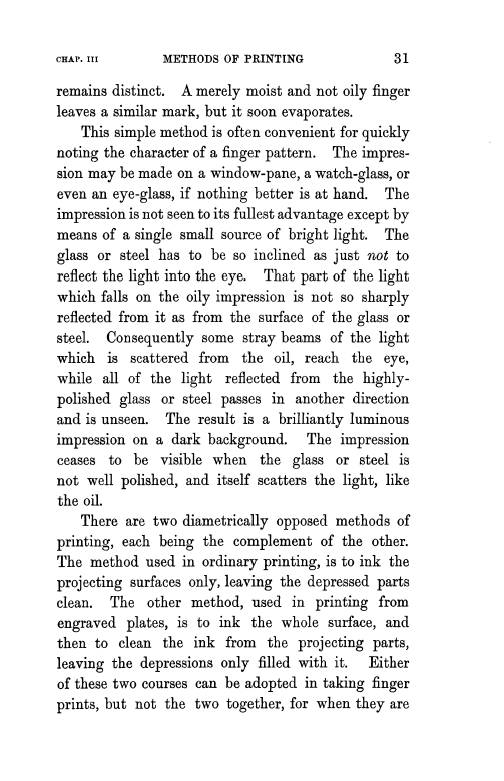| ||||||

OCR Rendition - approximate
CHAP. III METHODS OF PRINTING 31 remains distinct. A merely moist and not oily finger leaves a similar mark, but it soon evaporates. This simple method is often convenient for quickly noting the character of a finger pattern. The impression may be made on a window-pane, a watch-glass, or even an eye-glass, if nothing better is at hand. The impression is not seen to its fullest advantage except by means of a single small source of bright light. The glass or steel has to be so inclined as just not to reflect the light into the eye. That part of the light which falls on the oily impression is not so sharply reflected from it as from the surface of the glass or steel. Consequently some stray beams of the light which is scattered from the oil, reach the eye, while all of the light reflected from the highlypolished glass or steel passes in another direction and is unseen. The result is a brilliantly luminous impression on a dark background. The impression ceases to be visible when the glass or steel is not well polished, and itself scatters the light, like the oil. There are two diametrically opposed methods of printing, each being the complement of the other. The method used in ordinary printing, is to ink the projecting surfaces only, leaving the depressed parts clean. The other method, used in printing from engraved plates, is to ink the whole surface, and then to clean the ink from the projecting parts, leaving the depressions only filled with it. Either of these two courses can be adopted in taking finger prints, but not the two together, for when they are
|